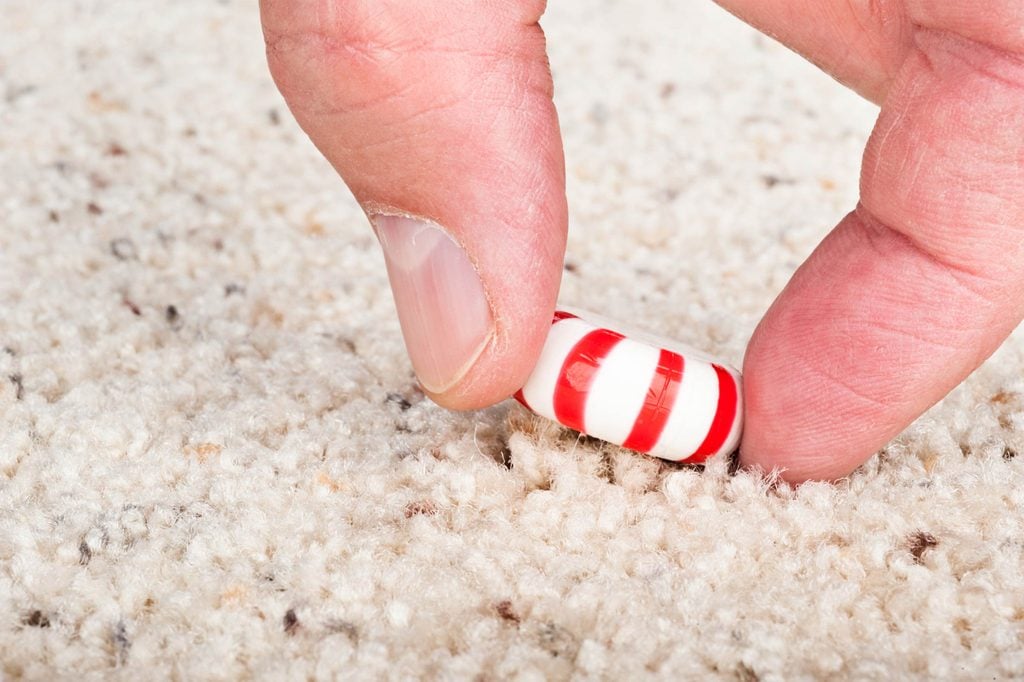Confirmed: What Doctors Think About the 5-Second Rule
Updated: Apr. 10, 2019
We've all dropped some food on the floor, only to pick it up instantly and eat it anyway. As long as it hasn't been on the floor for more than five seconds, it's probably okay, right? Here's the truth.

The “5-second rule”: real or fake?
It’s a bummer when you unwrap that miniature piece of chocolate only to have it drop on the floor. Who wouldn’t be tempted to eat it anyway, especially if it only landed on the ground for a few seconds? After all, there’s a “five-second rule,” right? But just because you’ve been hearing this notorious five-second rule for years doesn’t mean you’re actually in the clear when it comes to avoiding germs and bacteria.
Unfortunately, just because popular folklore references the five-second rule doesn’t actually mean it’s true. In fact, research has found that no matter how quickly you pick up food that falls on the floor, you’re still going to pick up bacteria with it, even if it has been on the ground for five seconds or fewer. While there are some food poisoning myths you can ignore, this is not one of them.
Where did the “5-second rule” originate?
There’s no definite evidence on where the five-second rule comes from, but according to Prevention, it may have come from Mongolian ruler Genghis Khan, who allegedly let food that fell sit on the floor as long as he wanted based on the idea that any food prepared for him was always good enough to eat.
Centuries later, fans of Julia Child would later claim she dropped a turkey on the ground during a cooking show and continued to cook it anyways. While this rumor was later debunked, it took on a life of its own, perhaps contributing to the idea that it’s OK to eat food after it hits the ground. That wasn’t the only food safety myth Child perpetuated—find out why experts want people to reconsider her preferred practice of washing chicken before you cook it.
Scientific research on the “5-second rule”
“The ‘five-second rule’ is a popular myth that’s been around forever, but unfortunately, no, it’s not a real rule we can follow,” says Arefa Cassoobhoy, MD, MPH, medical editor at WebMD. “Eating food that’s fallen to the ground does come with a risk of taking in bacteria known to cause food poisoning. Research shows food will instantaneously pick up bacteria from the surface it lands on.”
One study published in the journal Applied and Environmental Microbiology tested a variety of foods on a number of floor surfaces, and it found that no fallen food completely escaped contamination. However, the research did find that the longer the food was left on the floor, the more bacteria it contained, which could help explain how the five-second rule came about. Still, even if your food dropped for just a second, it still puts you at increased risk for food-borne illnesses.
Although the amount of time the food remains on the ground does make a difference, it turns out that the type of floor surface, as well as the composition of the food, matters even more. Surprisingly, carpeted floors transmit fewer bacteria than floors made of tile and stainless steel, according to the study. Wood floors, however, varied in how much bacteria they transmitted. As for types of foods, wet foods such as watermelon have the highest rate of contamination, while drier foods—like that piece of chocolate— pick up fewer bacteria. So beware of wet foods, along with these foods you didn’t realize could give you food poisoning.
“5-second rule” risk factors
When you eat food off the ground, you’re putting yourself at risk for picking up bacteria such as E.coli and Salmonella, according to Berkeley Wellness. Both of these bacteria can cause some unpleasant side effects, and they can even sometimes be deadly. When you drop food, it’s important to use your best judgment rather than the five-second rule. Did it fall somewhere that’s in a busy area? Do you clean there often? What type of food is it? And is it really worth saving?
“Bottom line, I’m not sure how likely [it is that] you’ll get sick from eating food off the floor, but if it’s a moist food fallen in a high-traffic area, like around my kitchen table, I can tell you, I’ll be throwing it away,” says Cassoobhoy. We’ve all followed the five-second rule once or twice before, but sometimes, you’re just better off safe than sorry. Now that you know the truth about the five-second rule, learn the science behind more common food myths that are wildly untrue.